Latest IMOCA 60 weapon
While there may be six new VPLP-Verdier designs for this IMOCA 60 cycle, the two stand-out campaigns (by coincidence also the ones with the most money) are Edmond de Rothschild (aka Gitana 16) skippered by Seb Josse and Banque Populaire VIII, skippered by Armel le Cleac’h.
Both teams are big, the size of small AC teams, with in-house designers, engineers, sail makers, boat builders, etc and run similar multiple campaign in parallel. So while the focus this year is on the their IMOCA 60s, with Vendée Globe victory the target, 2017 will see both teams launching new giant multihulls aiming at singlehanded (and possibly fully crewed) record attempts. These will culminate in a proposed singlehanded non-stop round the world race, like a multihull Vendée Globe, starting and finishing in Brest in 2019. More on this in due course.
In the meantime the focus is on developing their IMOCA 60s, which, despite having one design masts and keel foils, have nonetheless taken a technological quantum leap with the addition of revolutionary new foils. As on all canting keel boat, these foils have gone from merely providing lateral resistance, at this no longer available from the foil, when the keel is canted, (ie the toed out boards of the 1990s), culminating in boards that provide both lateral resistance, plus some righting moment and vertical lift beneath the hull, provided by the toed boards seen on the Banque Populaire and MACIF VPLP-Verdier designs of the last race (now Maitre CoQ and SMA).
The dramatically curved boards fitted to the six latest generation VPLP-Verdier designs increase significantly the latter two features, righting moment by providing lift down to leeward and vertical lift due to part of the foil being beneath the boat’s centre of gravity, Moth-stylee, but at the expense of providing lateral resistance.
Inevitably, just as they have on the AC cats, the foils have been proving the weak link so over the next months, before the teams have to pitch up in Les Sables d’Olonne, all are going to the nth degree to get their equipment as reliable as possible. Two races across the Atlantic, first in the Transat bakerly and then the IMOCA Ocean Masters New York to Vendee (Les Sables d’Olonne) will go some way to highlighting any bugs, with hopefully enough time to find remedies prior to the 6 November deadline.
All the new IMOCA 60s, with the exception of Pieter Heerema’s No Way Back, competed in last autumn’s Transat Jacques Vabre, but of the five only Banque Populaire made it to the finish. Gitana pulled out early, but made it to the OSM-organised St Barth-Port la Foret return race in December, which she won (and is now qualified for the Vendee Globe).
The new Gitana shared hull moulds with Jean-Pierre Dick’s St Michel-Virbac, both built at Multiplast, and their design is development of that of Safran and Banque Populaire, which were both built by CDK in Port la Foret.
So how does the newer hull shape differ from the older ones? “It’s more conservative,” explains Seb Josse. “It’s the same family and the same shape, but we are a bit narrower, because we don’t want a massive boat. The idea is to be better in transitions so the boat sails more easily; so if the wind drops off five knots, you don’t need to make a sail change, you can keep going because the boat’s a little bit lighter and has less drag. With a big boat, like Pindar, when the wind drops, it is stuck and you need to put up a bigger sail.” The aim is to improve performance in light to medium conditions, an area where last generation boats, like PRB or SMA excel.
Also, compared to the last generation IMOCA 60s, everything apart from the hull (ie rig, keel and structure) has moved around 80cm aft. “The idea is to have the bow up and have the centre of gravity a little bit further back for downwind and to have a good attitude reaching,” Josse explains.
While all the focus is on the foils, VPLP-Verdier have also made improvements to the hulls of the new generation boats. Josse says that even without the new foils and with less lead in the keel and despite having a heavier one design mast and keel foil, the new hulls are around 0.2-0.3 knots faster than their predecessors.
In terms of their build, the hull forward on all of the new boats is monolithic (ie without a core – something which Groupe Finot did back in the 1990s) although, following the Transat Jacques Vabre, this area has had to beefed up on all the boats by fitting more internal frames and longitudinals.
In addition to this, over the winter in the shed, the Gitana team has tried to improve their IMOCA 60's light to moderate performance, although Josse won’t get into specifics as to how. “There’s the weight of the bulb, the water ballast, and angle of your keel. So you play with all of those...”
They have also been working on the cockpit design. In contrast to the VO70s and VO65s where it seems to be all about maximum discomfort for the crew, on the French shorthanded offshore boats (both mono and multis) there has been a very active drive in the opposite direction. Before you make any comments, there is science behind this and particularly for shorthanded sailors, their condition, derived from the effort they have to put into things, countered by the quality of the short amount of sleep they get, and how much fast moving freezing water bombards them, are all important factors in trying to ensure they continue to operate to the optimum. The belief is that the weight of planting a cabin over the cockpit, is more than compensated by the increased performance from the sailor.
There is also a move in these boats for the skipper to be able to operate almost entirely from on deck. On Gitana, Josse can sleep at his seats in the cockpit, which is now entirely covered and features a new plastic cover to enclose its aft opening (yes, like a cruising boat bimini). Into this enclosed area comes every sail control, there is a pedestal for Josse to grind, a swing out computer to do his routing and he can even reach the galley, just inside the twin companionways.
“You spend 80-90% of your time on deck, so if you just can hear the water and not get it in your face, that’s good,” as Josse puts it. “I can do everything here. I have the laptop here. I don’t need to go inside. Even to make the food, I can do that outside. I only need to go in just to stack and sleep. Otherwise I’m always outside.”
In the cockpit, most noticeable is how low the four winches are. This is to lower the overall CoG of the boat and as Josse observes, he rarely has to top handle (because he uses the pedestal) and if he does, it is easier on his knees because of the often heinous motion of the boat makes standing up difficult. Added over the winter has been a carbon fibre tubular structure to hold rope bags bang in the middle of the cockpit. These would really get in the way if this were a fully crewed boat, but for Josse, alone, they work just fine.
Josse freely admits that he rarely helms, delegating that job entirely to the B&G pilot. “In really light air when you helm you are faster, but the problem is that particularly when you’ve made a sail change, done stacking etc after all that, you are not a good helmsman and the autopilot is better. Today the [shorthanded] skipper’s job is to make good calls about the sails, don’t break the boat and make good routing.”
As part of the move towards IMOCA 60s becoming pilot house ocean racers, are the windows in the cockpit that provide the skipper with a view forwards. On either side of Gitana's cockpit, there is a forward facing window at the front (like PRB) and another aft ahead of the cockpit seat.
One interesting feature of several of the IMOCA fleet we saw in Plymouth was the extensive use of slippery Cuben fibre, which we hope has been recycled from old sails. On Gitana this is used in the cockpit for the rope bags, while down below (we weren’t allowed to take photos) there’s a substantial ramp made from the material, positioned athwartships across the ‘saloon’ down which the stack trundles in a friction-free manner during manoeuvres. There are also little Cuben fibre ramps to help reduce friction of moving sails through the apertures in the main bulkhead.
Unlike some of the other IMOCA 60s which have fitted sliding hatches (Loick Peyron reminded us that he was first to come up with this on his Transat winner Gitana Eighty eight years ago), on Gitana 16, the roof over the cockpit is fixed and seems giant, extending a long way aft. This, Josse says, is lighter and more watertight than the sliding hatch (which Banque Populaire has).
Foils
And so on to the thorny subject of foils. According to Josse, Gitana is currently fitted with v2.5 foils, his team having waited a little longer to conceive their new foils than Banque Populaire did. In the Transat bakerly, Gitana 16 is using these new foils, while Banque Populaire is back to last year’s v1 set after one of their new foils broke two weeks ago.
Getting new foils is a major both in $$$ and time: We understand they cost in the order of 300,000 Euros a pair and take three months to construct. Most are built by Laurent Tournier’s company Heol Composites in La Trinite, which also builds the GC32 catamaran foils.
In the present race, Gitana is the only boat running second generation foils. These appear to be resolving the issue with boards breaking at ‘the bend’ by giving it more cord here (in fact Banque Populaire’s foil broke a short distance from the hull exit…)
According to Josse the new generation foils are just ‘bigger’ in every dimension, the constraint being the daggerboard box. As on the new generation boats, the foil must at times be able to withstand not only the weight of the boat but its dynamic loads too, so the cases are more robust than they have been previously. One major difference between the cases on Gitana and Banque Populaire is that the latter’s exit the hull at the same angle, but lower down in the boat (ie they should be lifting the boat more, but providing less righting moment – we think...). A downside of the Banque Populaire arrangement is that the opening either side of the main bulkhead is tiny, meaning that skipper Armel Le Cleac’h has to become part ferret if he wants to get forward.
Josse says he hasn’t spent much time testing Gitana’s new generation foils yet (that’s what the two transats are for) and he won’t say much about what he’s learned about how they affect performance, other than “it’s a lot faster and upwind it’s much better. It’s still not as fast as PRB, but we’ve closed the gap.”
For here lies the problem with the new foils. Last year, the older generation PRB and MACIF, which, as mentioned, both feature straight boards that protrude through the deck close to the gunnel and are toed in (ie they are heavily angled when the boat is heeled) both proved to be much better upwind. Oh, and VMG downwind. And in light wind.
“12 knots upwind – it is horrible,” Josse advised us soon after he launched his boat last year. “1 knot slower and 5° lower.” But this upwind performance deficit against the previous generation, comes as little surprise. The straight boards have an area to prevent leeway of roughly 4sqm, whereas the new generation curvy boards are closer to just 1.8m.
Another difference between the Banque Populaire and Gitana's new foils is that the latter have a straight shaft, whereas Banque Populaire’s are curved.
Josse agrees that allowing seven foils, so that, in addition to the canting keel and twin rudders, two sets of straight foils could be used (like Rambler 88) which might be cheaper than one set of bent ones. However he reckons rather than making a rule change, they could arrive at the same position if they continued to develop the present configuration of foils.
“They weigh 100kg each, so if you go up to seven foils that’s an extra 200kg,” Josse observes. He also points that it has taken more than a decade to reach what is felt to be the optimum position for straight boards (ie where they are on PRB and SMA) and, despite what designers will tell you about the merits of their simulation software, this development (discovering the correct position, the right angle and rake for the boards etc), seems to have been largely empirical, ever since boards were fitted from the outset of canting keel IMOCA 60s in the mid-1990s.
Josse also reckons that if development of the foils follows its logical path, the days of canting keels could be numbered. “Today you need a canting keel just for the fin, so it works like the foils, because the lift of the keel (foil) is bigger than the weight of the bulb. So the way to go is to make a sports boat, with a small bulb, and once you are at 17 knots you just start to be a flying boat."
Sadly this highlights on one of the downsides of IMOCA 60s now featuring one design components. With increased reliance on the foil to provide righting moment (as well as vertical lift), you could dispense with the complexity of the canting keel and there would be less requirement for hull form stability, so boats could become much narrower. Less boat is a lighter boat, so the rig need not be as tall, which means the foils can be smaller and so down goes the weight spiral again…
You would think that ‘smaller’ foiling IMOCA 60s such as this in the future might bring down costs, however Josse disagrees: “A cheaper boat is now impossible when you see all the technology involved. Even all the electronics etc, we have now, the batteries and the 3D gyro compass. It’s really crazy. Today we are at a crossroads, because when the new hulls were designed, we didn’t know if the foils would work and, if it didn’t work, we wanted to go back. So you could have a 5m or 4.5m wide boats, you could make the foils one metre longer, the bulb smaller, and you'd end up with a completely different boat.
“But it’s not cheaper. If you look at the AC, a smaller boat is not necessarily cheaper. Even one design it was the same. In the MOD 70 you could have more sails, you could spend money on your crew and you could train more and make yourself stronger that way. It’s impossible to regulate money.”
While on the subject of money, Josse reckons a new state of the art IMOCA 60 costs around 4 million € and 1 million €/year to campaign, but others in the class say these figures for the top campaigns are conservative…
Most believe that such high budgets are not sustainable in the IMOCA 60 class. Influential former Class President, Luc Talbourdet, is still adamant that a fully one design boat is the way forwards, while Josse believes that the IMOCA class needs to be either fully one design or fully open, not the present half-way house. “If you fix one part of the boat, teams just concentrate on the other parts and go more extreme with those, which is not good for the general picture. I fully agree with 100% one design boats like the MOD 70, where you can’t change anything on board.
“But to run the one design you need a measurement guy, you need administration to run all the spare parts for every team, for that you need budget and you need an independent society with several people to run the one design, which costs.”
Back to Gitana, and in terms of speed, Josse says that the top speed was 33.4 knots with the old foils and he has yet to find out what he can crank out with the V2.5s fitted. “I know the boat can go much faster, but what we really want is high average speeds. With this we can see crazy average speeds of maybe 27 or 28 knots.” Ie - knocking on the door of the fully crewed monohull 24 hour record.
Probably because of the issues with the class limit of five appendages, the IMOCA 60s aren’t permitted to go for multihull-style T-foil rudders. One imagines this would be a logical step if they were permitted. Until this happens the IMOCA 60s won’t be able to become full foilers, although there are photos showing considerable air under their hulls. At present they are at a stage comparable with the ORMA 60s, when were when they first fitted curved foils in their floats during the late 1990s, and performing a similar amount of wheeley-ing.
Other option to counter this, such as an Ecover 3-style interceptor plate is prohibited these days and Josse says that on Gitana they have erred away from fitting a Telefonica VO70-style lip on their transom, that would have a similar effect. However Banque Populaire has something similar to this. “We tried to make it smoother. At high speed it’s really good, but when it’s not working, it’s drag. We didn’t know where were going when we began designing this boat with the foil, so we tried to have a simple hull.”
On both Gitana and Banque Populaire there have been attempts to reduce the amount of effort it takes to transfer the stack. Down below on Gitana, as mentioned, the main feature is the giant Cuben fibre ramp. The ‘chart table’ or rather the carbon fibre panel covered in electronics, including comms gear, computer screen and Josse’s alarm (maximum time = 30 minutes), can be rotated both to weather between tacks or stowed forward, out of the way, for when the stack is passing through.
On Gitana, the stack (ie easily transportable vinyl boxes) is located immediately aft of the main bulkhead (it’s further aft on Banque Pop) and to further help move the boxes across the boat there is an overhead line system (albeit not the cool, giant C-shaped track Bernard Stamm had on the ceiling of his last boat). The set-up on Gitana allows Josse to move the up stack laterally while for fore and aft trim he typically moves the sails back and forward. Here there is another difference between the two boats in that Josse has his sails stacked on deck (Volvo style), while on Banque Populaire, le Cleac’h prefers his down below (despite the narrow apertures in his boat's main bulkhead).
According to Josse, the stack, when full, weighs around 100kg while the sails are on average around 50kg and typically there are seven (of the nine total) on deck at any one time, so around 550kg to move tack to tack.
As part of the new IMOCA rule, the number of ballast tanks have been limited on the new boats, as before recent generations of IMOCA 60 have becoming giant water tankers. Gitana has two tanks each side down by the chine, each carrying up to one tonne of water, and there’s no centre line ballast midships or up forward as on the older boats.
The new foils have had a profound effect on the way the water ballast is used and the sails are positioned. Typically everything is forward upwind, and aft downwind and in between reaching, but when the foils are working and boat is up to the high teens and above, Josse says it is best to put all the weight on top of the foils to ensure they remain in the water. When the foils are working, weight aft,is what prompts the boat do the famous wheelies. “So when you start to go fast, move forward – the opposite of what we learned at school!” pronounces Josse.
And rather than maintaining maximum water ballast as conditions strengthen, and boat speed moves into the 20s, the ballast is emptied because by then enough righting moment is being provided by the foils. “So you can have the same righting moment, but be one ton lighter...The faster you go the lighter you can be,” Josse explains.
In terms of using the foils, at present, Josse says, it is either fully down or fully up, but he can imagine a time at high speed when they might partially raise it.
However, as with the foiling cats, the technique that requires most work, is making the boat go in marginal foiling conditions. “It’s like a multihull with the gennaker - when you have no foils you never want to push, so you sail low and slow, but if you put down the foils, the foils start to work and you go five knots faster. It’s not easy, because when you don’t push enough on the foils, it doesn’t work, but you have to go maybe a little bit more to make it work and then when it does work, it's like a turbo!
“So because the foil gives you such big righting moment the faster you go, the aim is to try to have it working all the time. When you are downwind, you don’t try to go low, you just try to go fast to be on the foil. If you go lower and slower, that doesn’t work. So it’s more like a multihull style.”
Another difference between Gitana and Banque Pop is in the way the lines run back down the boat. On both, lines run aft from the bow through a tunnel that descends down, towards the main bulkhead. Here, any water that may have got in empties into the canting keel box. However on Gitana , the lines then run aft through the main saloon area, in a single central tunnel, low down before emerging into the cockpit in a central pit area between the twin companionways. The twin watertight doors are built in an elaborate way so that they avoid colliding with the pit area. As ever on these boats there is a massive amount of rope, including for example for the locks on all the halyards and instead of regular clutches everything can by held by constrictors.
On Banque Populaire, the arrangement is much more similar to the last generation VPLP-Verdier designs with lines running aft from the keel box up two fairly obtrusive tunnels in the main saloon to twin pit areas either side of the companionway. However on Banque Pop the whole interior nav area is positioned lower down than it is on Gitana enable Le Cleac’h to move his stack over the top of it.
On all the new boats, the canting keel is operated by one ram with a back-up in reserve and these rams are made of stainless steel rather than titanium as they have been in the past.
With all the focus on foils, little is spoken about what happens above deck. However all of the six new VPLP-Verdier designs have chosen the rotating wingmast one design mast (over the conventional mast) made by Lorimar in Lorient. According to Josse is this partly because the boats are going faster still, so windage is more of an issue, but also because, although the wings are a fraction heavier, their CoG is lower.
In conclusion, the new generation IMOCA 60s are complete weapons and it seems likely that the speeds they will achieve will be knocking on the door or possibly even surpassing those of VO65s and VO70s very soon. Not bad for a shorter, singlehanded boat.
While there is still talk of curbing costs, frankly with 33 boats gunning for the Vendee Globe’s 27 places, we don’t see there's much of a problem. Yes, it’s not good for campaign budgets, but it would be a crying shame to go one design (like so many other offshore races/classes) just when we’re on the brink of one of the most significant developments in yacht design of all time…
By Thierry Martinez / Sea & Co / www.thmartinez.com / Gitana and on board photos from Yann Riou
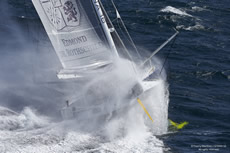 |
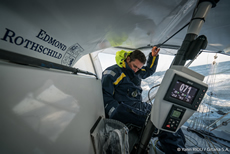 |
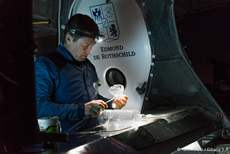 |
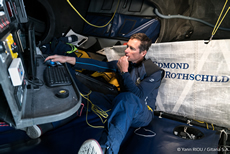 |
By us
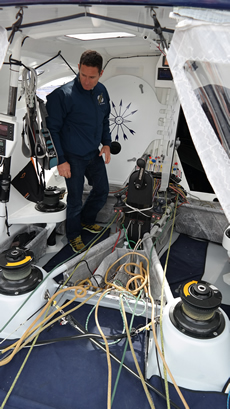 |
 |
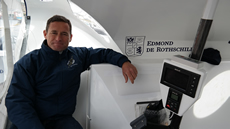 |
 |
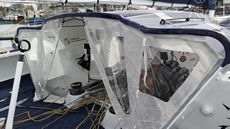 |
 |
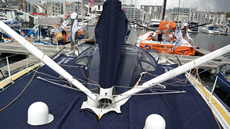 |
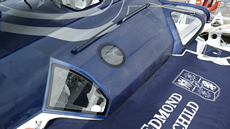 |
 |
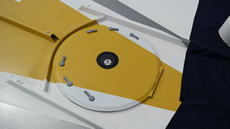 |
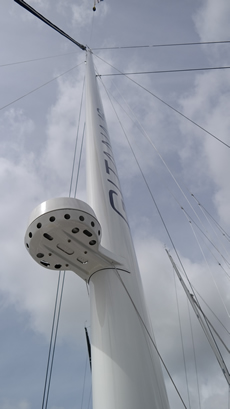 |
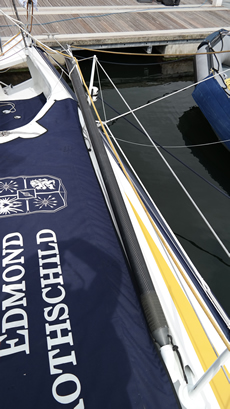 |
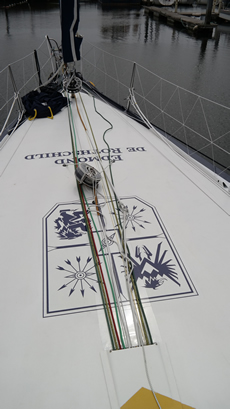 |
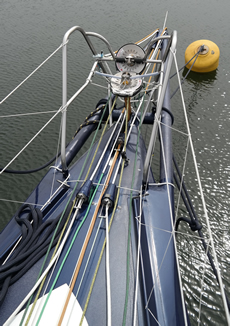 |
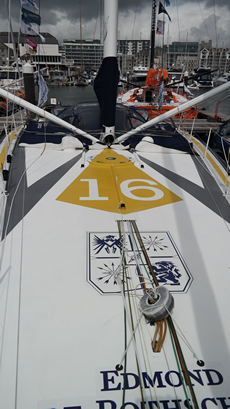 |
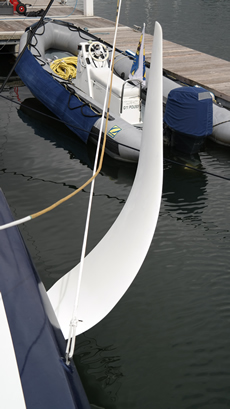 |
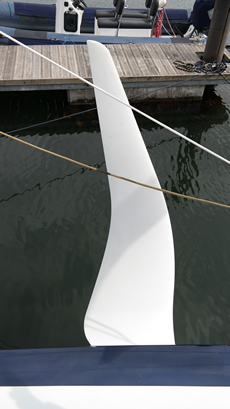 |
 |

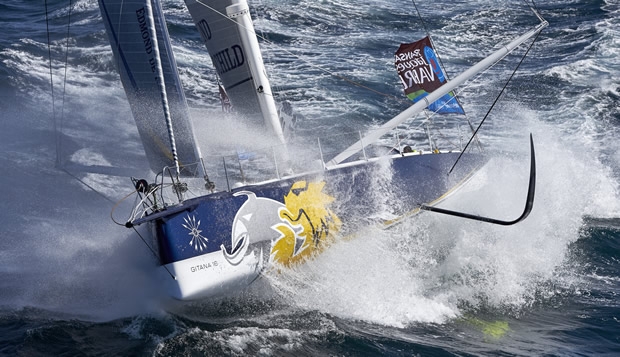
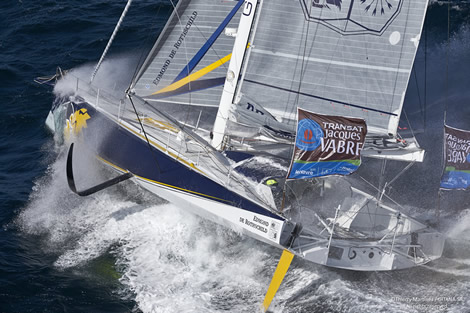
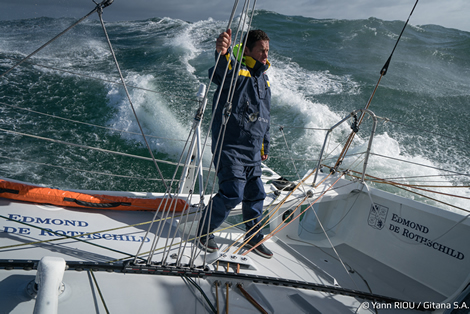
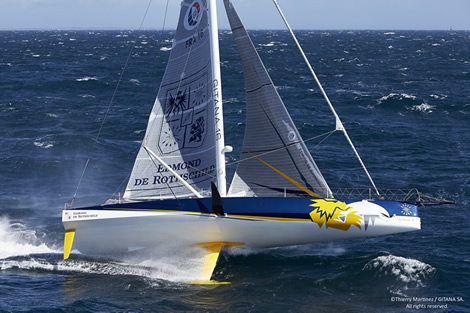
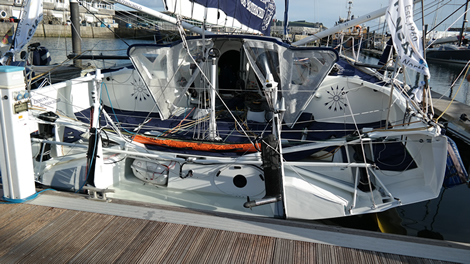
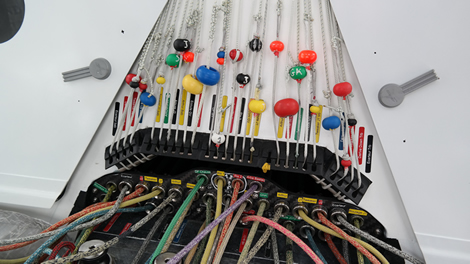









Latest Comments
Mats Ohlsson 15/06/2016 - 20:32
Wonderful article and great technical photos! Really great reading. Many Thanks, MatsAdd a comment - Members log in